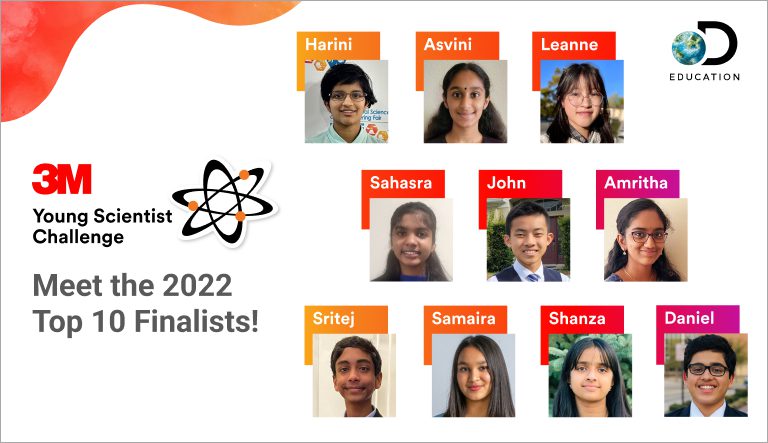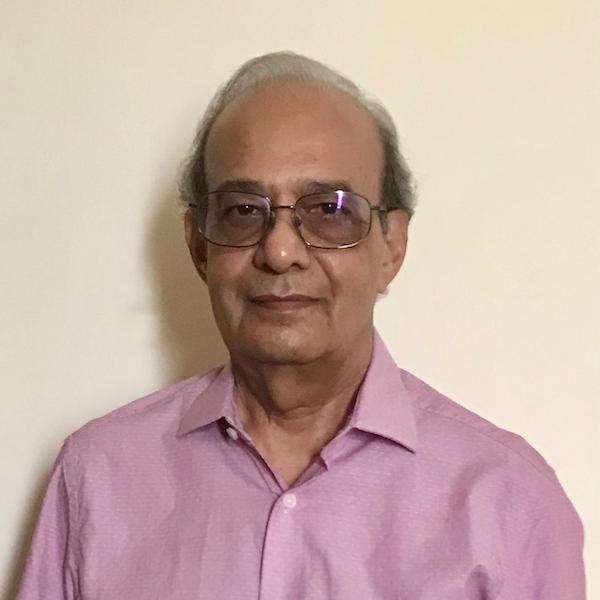6 Indian Americans among 3M Young Scientist Challenge finalists

From 2012 until 2020, America’s Top Young Scientist title has gone to six Indian American students
Six Indian American students are among this year’s top ten finalists in the annual 3M Young Scientist Challenge, the nation’s premier middle school science competition.
This year’s finalists ranging in age from 11-14 identified an everyday problem in their community or the world and submitted a one- to two-minute video communicating the science behind their solution.
Six Indian Americans among top 10 2023 3M Young Scientist Challenge finalists are: Anisha Dhoot, Portland, Oregon; Ishaan Iyer, Rancho Cucamonga, California; Shripriya Kalbhavi, San Jose, California; Anish Kosaraju, Saratoga, California; Adhip Maitra, Oviedo, Florida; and Shruti Sivaraman, Austin, Texas.
READ: 13 of top 30 kids in Young Scientist Challenge are Indian Americans (November 16, 2019)
The competition event will take place from Oct 9-10, 2023, at the 3M Innovation Center in Minneapolis.
Each finalist in the competition for students in grades 5-8 will be evaluated on a series of challenges, including a presentation of their completed innovation.
Each challenge will be scored independently by a panel of judges. The grand prize winner will receive $25,000, a unique destination trip, and the title of America’s Top Young Scientist.
Anisha Dhoot’s project focuses on utilizing kelp seaweed to improve soil quality and crop selection. She applied to 3M Young Scientist Challenge to share her passion of STEM learning and research with others and to motivate younger students to achieve their true potential.
“Girls are underrepresented in STEM field in both high school/college level and later in professional careers and I want to reverse that trend,” Dhoot says.
In 15 years she hopes to be a successful STEM professional working in a technology company on some of the world’s hardest problems to improve the life of every person on earth.
Ishaan Iyer created a cost-effective Braille device that encodes the English alphabet into Braille language and converts it into a tactile Braille cell.
He entered the 3M Young Scientist Challenge because he is “passionate about science and technology, and I believe that the competition provides an excellent opportunity for me to showcase my skills and ideas in these areas.”
READ: Indian American Gitanjali Rao is the winner of 2017 Discovery Education 3M Young Scientist Challenge (October 19, 2017)
In 15 years he hopes to be a rocket scientist working on designing and building inexpensive and eco friendly spacecrafts that common man can use to explore the universe.
Shripriya Kalbhavi developed EasyBZ, a cost-effective microneedle patch that allows for self-automated drug delivery without pills or needles.
She entered the 3M Young Scientist Challenge because she wants to help change lives. “I host a podcast called ‘Famous Personalities,’ and as part of the theme of my show, I research women scientists and speak about their lives, achievements, and research. Scientific research and innovations have always interested me, and I find the scientists, especially doctors, all around me to be extremely inspiring because they work to help people every day.”
In 15 years she hopes to be “wading through my residency training after I finish med school so that I can fulfill my dream of becoming a practicing neurosurgeon.”
“I have always felt a calling towards contributing to my community in the field of medicine, especially when it comes to neuroscience and womens’ health, and I would love the opportunity to perform precise work as a neurosurgeon,” she says.
Anish Kosaraju built a new method to improve cybersecurity measures by combating cyber account takeovers that does not require Multi Factor Authentication.
READ: Five Indian American students among 3M Young Scientist Challenge finalists (July 4, 2017)
He hopes to use the resources and mentorship provided by the 3M Young Scientist Challenge to take his project to the next level and improve the safety of the internet.
In 15 years Kosaraju hopes to be a cybersecurity expert who helps companies and individuals improve their security.
Adhip Maitra developed a computer program that can detect cases of Ptosis, a condition in which the upper eyelid droops abnormally low.
He has “a love for science and I think this experience will be a great scientific learning opportunity for me as the research process teaches many aspects to me.”
In 15 years Maitra hopes to beg continuing research and development in future for the benefit of the masses.
Shruti Sivaraman created a low-cost device and app that can detect and diagnose diabetic retinopathy (DR) by taking retinal images without the use of dilation drops.
She “entered the 3M Young Scientist Challenge because I believe that it is an extraordinary once-in-a-lifetime opportunity that will allow me to present my ideas to a science community as well as get the chance to expand my ideas making DR-Check the product I first imagined it to be!”
READ: 5 of 10 finalists in the 2018 Young Scientist Challenge are Indian American kids (July 22, 2018)
In 15 years Sivaraman hopes to be a computer engineer and help solve some of the big challenges faced in the world. I enjoy helping people around me. I like to observe the challenges or problems people face and solve those.
From 2012 until 2020, America’s Top Young Scientist title has gone to six Indian American students: Deepika Kurup (2012), Sahil Doshi (2014), Maanasa Mendu (2016), Gitanjali Rao (2017), Rishab Jain (2018), and Anika Chebrolu (2020).
READ MORE:
Indian American tween Iris Gupta finds way to treat allergies before they set in (October 8, 2015)
US teen Hannah Herbst gets ‘America’s Top Young Scientist’ award (October 16, 2015)
Indian American teenager from Ohio Maanasa Mendu named ‘America’s Top Young Scientist’ (October 24, 2016)

